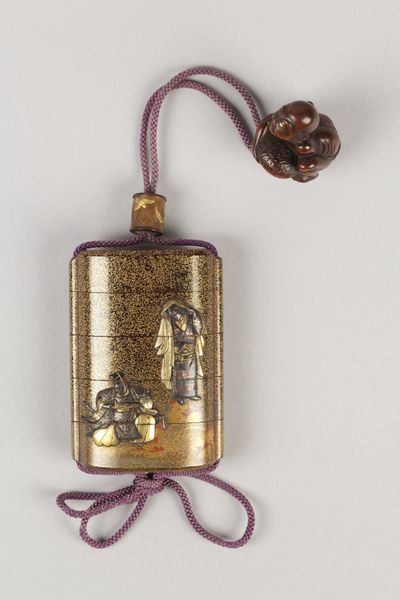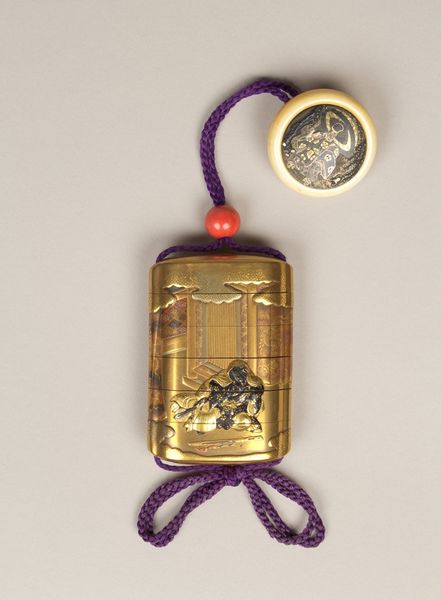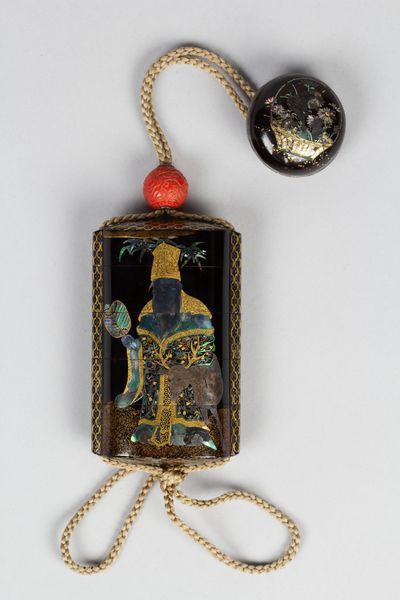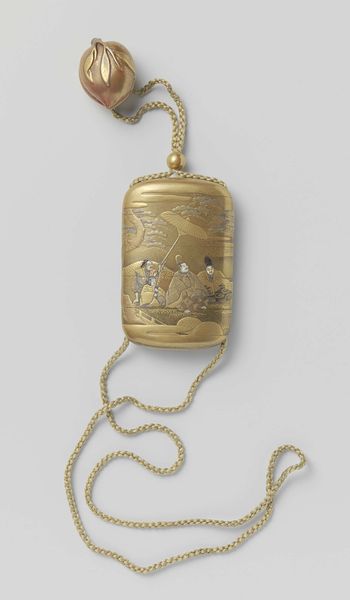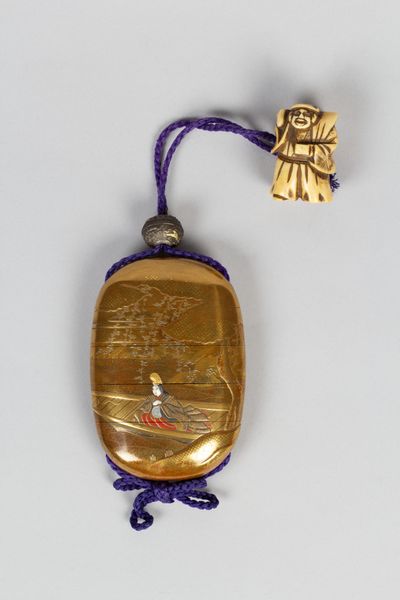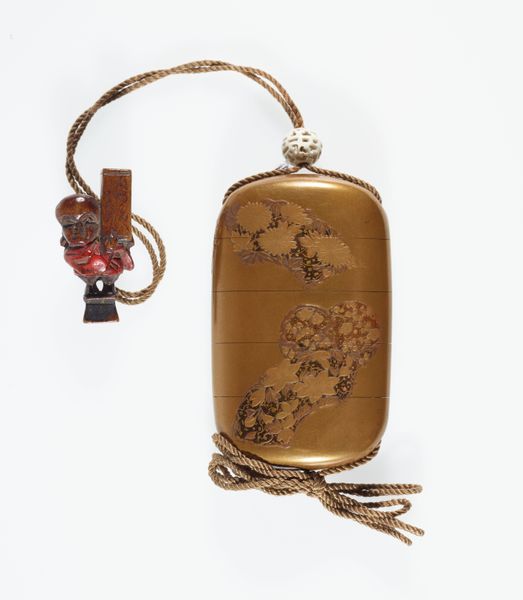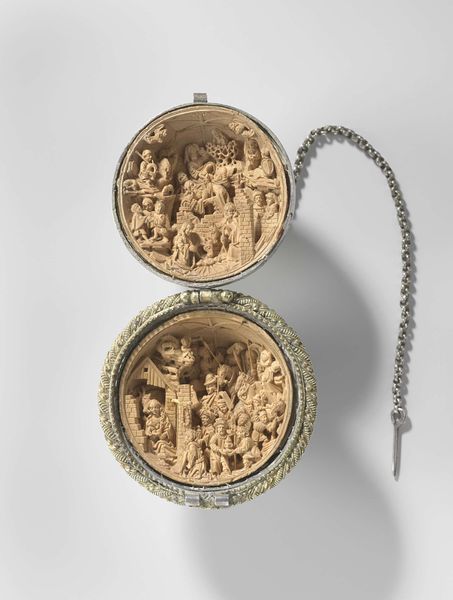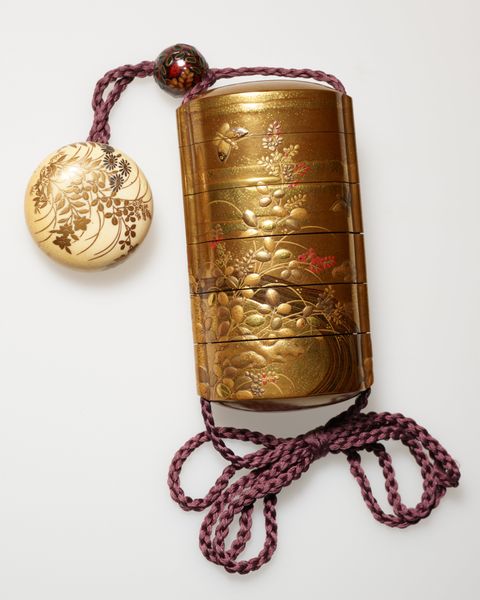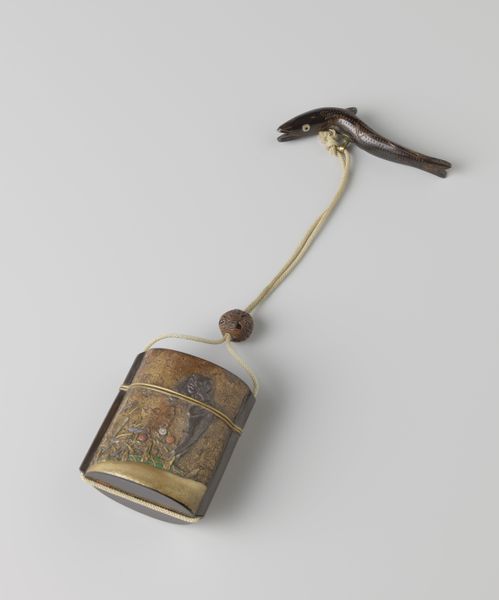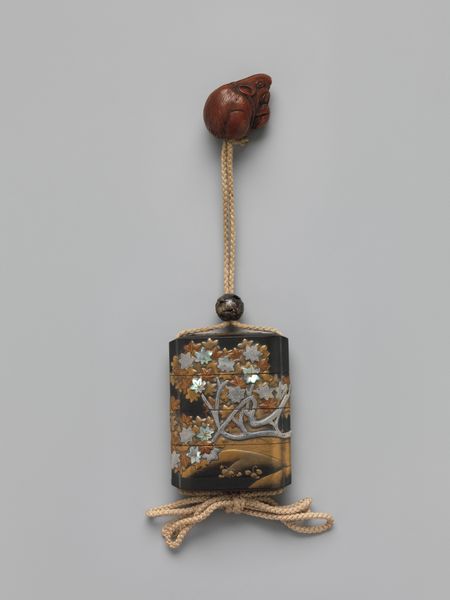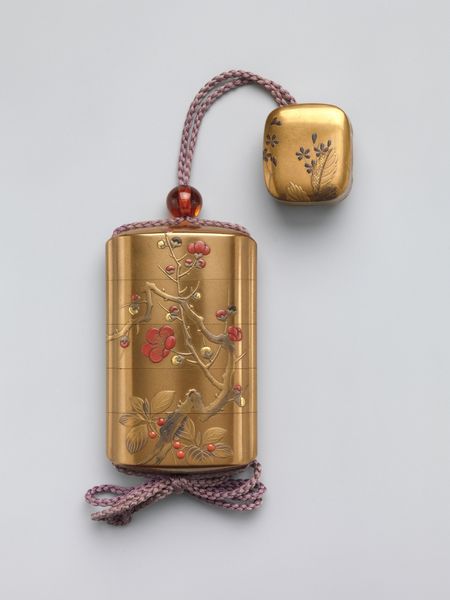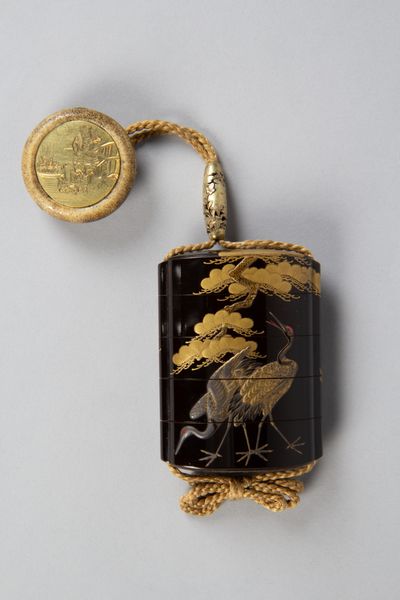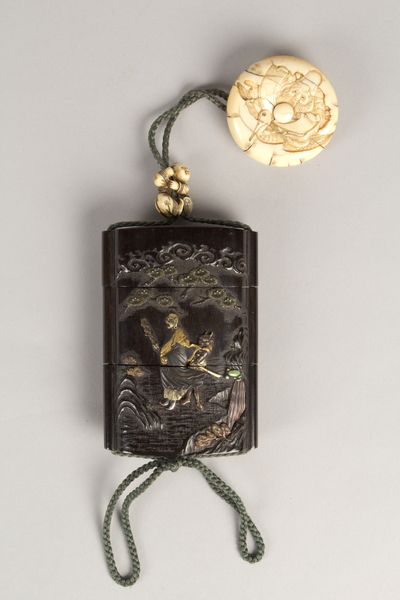
Case (Inrō) with Design of God of Longevity (Jurōjin) and a Small Boy with a Tortoise (obverse); Pine Tree by Stream (reverse) 19th century
carving, metal, gold, relief, ceramic, sculpture, wood
carving
narrative-art
animal
metal
asian-art
gold
relief
ceramic
japan
figuration
sculpture
ceramic
wood
miniature
Dimensions: 3 1/8 x 2 1/16 x 11/16 in. (8 x 5.2 x 1.8 cm)
Copyright: Public Domain
Editor: So this is an Inro, a Japanese case from the 19th century, attributed to Kakosai. It's made with a variety of materials – wood, ceramic, metal, gold… and depicts a narrative scene with figures and a landscape. The craftsmanship seems really meticulous. What strikes you most about it? Curator: Immediately, the diverse material construction of this piece catches my eye. We often separate "art" from "craft," but look at the labor embedded here. The carving, the metalwork, the ceramic elements… How does this blurring of material boundaries challenge our conventional understandings of artistic hierarchies? Editor: That’s interesting, I hadn’t considered that. I was more focused on the narrative – the god of longevity with the boy and tortoise. Curator: The narrative is undoubtedly important, but consider the social context of production. Who were the artisans who created this object? What was their status in society? Were they considered artists or craftsmen? The intricate detailing suggests specialized labor, dividing production among possibly multiple artisans. Editor: So you’re saying we should think about the makers, not just the images? Curator: Exactly. The value placed on different forms of making—high art versus decorative art—reflects specific historical power dynamics. In what ways does this miniature inro question distinctions between artistic disciplines and highlight consumption? Editor: I see your point. It's easy to appreciate the aesthetic qualities without considering the material reality behind its creation. Now, looking closer, I see how the combination of gold, wood, and ceramics elevates it from a simple object to something…more valuable. Curator: Precisely. By examining the materials and production, we move beyond simply appreciating its beauty and understand how labor, materiality, and consumption intersect within this miniature artwork. Editor: This has shifted my perception; I’m now seeing this Inro not only as an artwork, but also as evidence of production methods of its time.
Comments
No comments
Be the first to comment and join the conversation on the ultimate creative platform.
